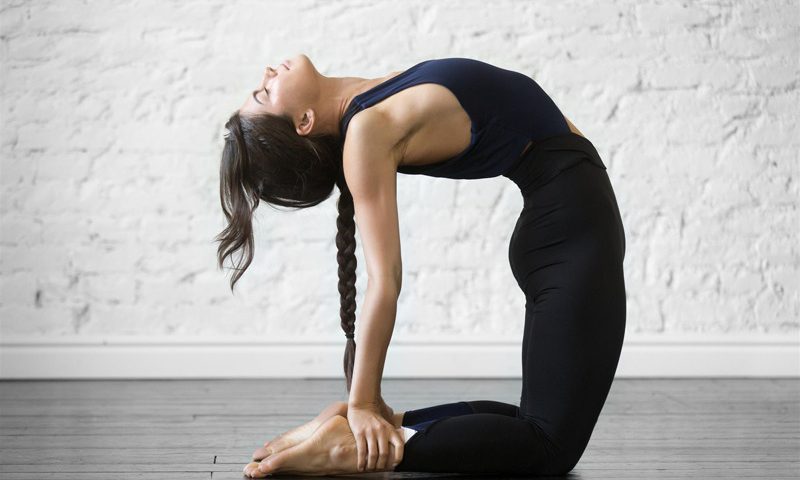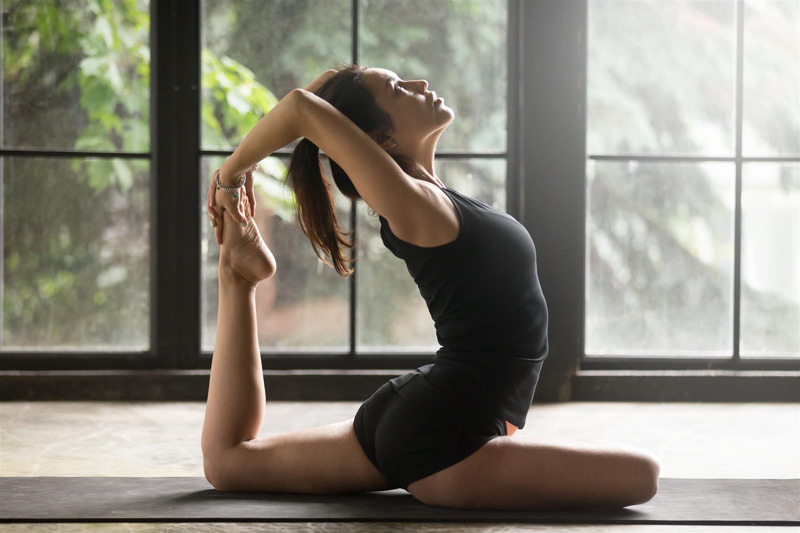
How to Create Space for Your Consciousness?
11th September 2018
Yoga for Your Upper Body
13th September 2018What is Yoga Sukha?

Sukha is a traditional Sanskrit word that means happiness, ease, or bliss. Translated literally, the word means ‘good space’, as ‘Su’ translates to ‘good’ and ‘Kha’ to ‘space’. In the Rigveda, the sacred Hindu text, Sukha is explained as the opposite of Preya, which translates to pleasure. This is because Preya is a temporary state of happiness, while Sukha is deep and lasting. While there are various ways to achieve Sukha, many people enjoy using yoga. Better still, you don’t need to be an expert yogini to achieve it! All you need is a quiet space and some comfy yoga clothes. In this article, we explore yoga Sukha in more detail.
How Does it Relate to Yoga?
Spoken of in Patanjali’s Yoga Sutras, Sukha is prominent in traditional yoga. Patanjali explained that an asana should be both Sthira and Sukha. Essentially, yogis should strive to maintain a pose but also enjoy practising it. If there is too much Sthira, it becomes difficult to find inner peace. At the same time, if there is too much Sukha then the asana may become passive and awareness can start to drift.
During yoga and meditation, many practitioners experience a sense of meditative absorption, or Jhana as it’s formally known as. During this time, they describe the sensation of Sukha as the bliss they have been searching for.
Sukhasana
One of the best ways to achieve Sukha is through Sukhasana. Also known as Easy Pose and cross-legged sitting, this asana is beneficial for yogis of all sorts. It’s worth noting that the name of the pose doesn’t necessarily reflect the skill level needed to practice it. Although it’s not an expert posture, it’s not quite as ‘easy’ as the name suggests. For beginners, it can be a little tricky and uncomfortable to start with. However, the more you practice, the more flexible you will become and the pose will gradually get easier!
In Sanskrit, the word Dukha translates to ‘the unsatisfying quality of being’. More simply, this can be described as suffering. Many yogis use Sukhasana to move away from Dukha and closer towards Sukha. Easy Pose doesn’t just provide physical benefits, it’s can also affect us mentally. When we use the asana for relaxation or meditation, we signify that we are ready to end our experience of suffering.

How to Practice
Before you practice Easy Pose, the first thing to do is find a thick blanket. If you don’t have one available, two thinner blankets will work just as well. When you’re ready, fold the blanket into a firm support about six inches high. Take a seat on edge of the support and extend your legs out in front of you. You are now in Dandasana or Staff Pose.
Next, place each foot beneath the opposite knee and cross your legs. Try to relax your feet as much as possible and let the outer edges rest comfortably on the mat. If you’ve got the basic leg fold of Easy Pose correct, you should see a triangle when you look down. The three sides should be formed by your thighs and crossed shins. It’s important not to confuse this position with a normal cross-legged posture. In Sukhasana, there should be a comfortable gap between your feet and your pelvis; unlike in the standard position in which the ankles are tucked in close to your bottom.
To make the position as comfortable as possible, sit with your pelvis in a neutral position. To do this, press your hands into the mat and lift your bottom away from the support. After holding this position for a few seconds, make your thigh bones heavy and place your bottom back onto the support. Finally, try to balance your tailbone and pubic bone so that they’re of equal distance from the mat. Your pelvis should now be in a neutral position.
Next, decide where to rest your hands. You can either lay them on your knees with your palms facing down or stack them in your lap, palms up. Finally, press your tailbone into the mat and draw your shoulders back, taking care not to overarch your lower back. You are in Sukhasana. You can hold the posture for any length of time, but if you practice it regularly make sure to alternate the cross of your legs. For instance, cross your right shin over your left on one day, and then your left shin over your right on the next. Alternatively, you can spend the first half of your practice with your right leg forward, and the second half with your left leg forward.
Benefits
Sukhasana boasts a range of great health benefits. When practised regularly, the posture strengthens the back and stretches the ankles and knees. Additionally, it opens the groin, hips, and outer thigh muscles. The position also promotes correct posture which can then be used in day-to-day life to prevent tension from accumulating. The upright spine used in the asana also helps to calm the mind; with this in mind, it can be therapeutic for those suffering from stress and anxiety.
Cautions
As the legs are crossed for an extended duration in Sukhasana, avoid practising the pose if you have a knee injury. If you have tight hips, you may find it difficult to cross your legs. Instead of forcing the pose, try practising a modified version until you become more flexible. Those with tight hips can make the pose easier by sitting on an extra blanket. If you still find it tricky, try swapping the blanket for a bolster or block. Raising your hips will make the pose easier by reducing stress on the hips, knees, and back.
In Summary
If you’re hoping to find deep, lasting happiness, incorporate Sukha into your yoga practice. Many practitioners use Sukhasana for meditation. When practised correctly, the position should be comfortable enough to hold for any length of time. For maximum comfort, practice wearing an oversized sweatshirt and a pair of leggings.

